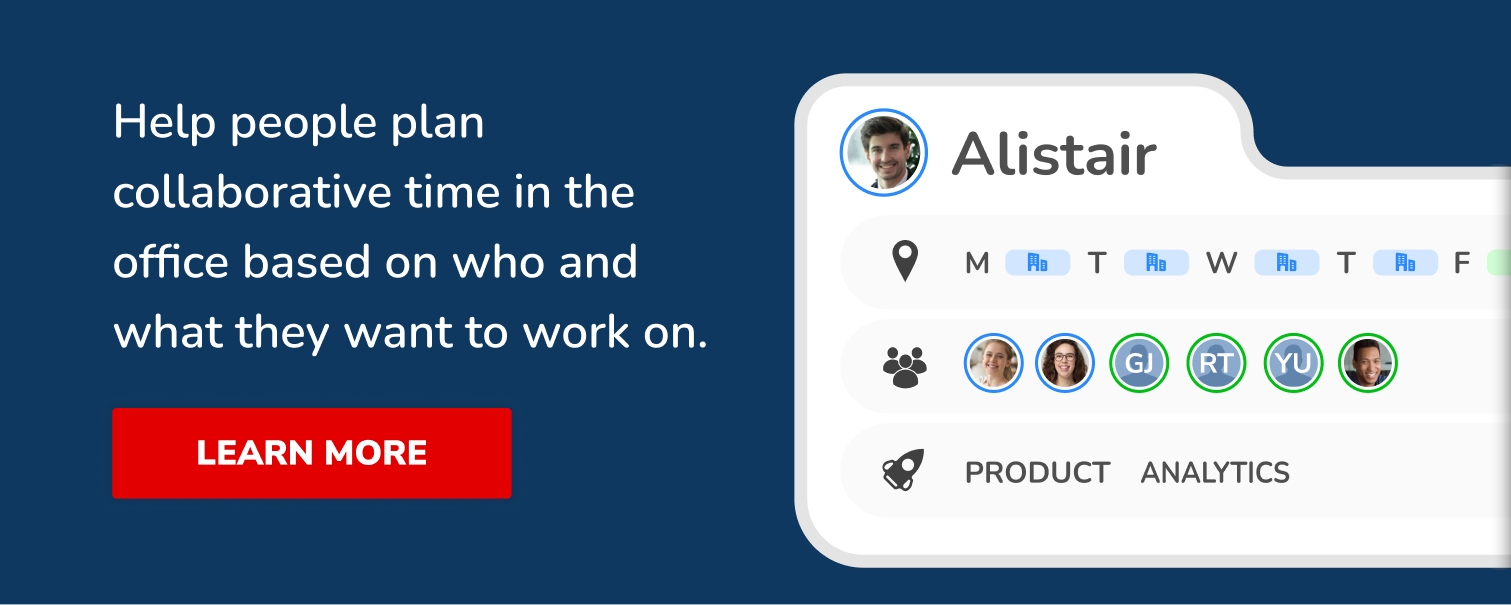The mainstream adoption of hybrid work has led to a growing popularity of shared office spaces, which provide flexible and cost-effective solutions for businesses and their employees.
Optimising shared office spaces is essential for promoting productivity and collaboration among team members. In this blog, we'll explore tips and ideas to help busy working professionals make the most out of their shared office space, from furniture choices to smart technology.
Open Spaces For Hybrid Companies
Shared open office spaces have become a popular choice for many successful hybrid companies. The open plan of these spaces provides ample room for employees to spread out and work comfortably, without feeling cramped or confined in their own space. Additionally, the desk configurations are typically arranged facing each other, fostering collaboration and teamwork.
What’s further is that open-plan offices are extremely flexible when it comes to reconfiguring things down the line. With fewer physical walls and barriers within the space, changes can be made relatively easily to accommodate shifting needs as they arise.
However, it's important to note that while there are many benefits to working in an open-plan environment, it may not be ideal for everyone. For some employees, they may prefer quieter environments in order to focus on their tasks at hand, this type of workspace can prove challenging. To counter any potential issues related to noise levels or distractions within an open-plan setting, consider setting aside designated areas or ‘pods’ within the office where individuals can retreat for quiet work time.
Here are our top tips for organising shared office spaces for maximum productivity and collaboration.

1. Prioritise Flexibility and Adaptability
A key aspect of creating an efficient shared office space is ensuring that it can accommodate different workflows and individual preferences. This requires flexibility and adaptability in both the space's layout and furniture choices.
One way to achieve this is through modular furniture and movable workstations. These can be easily rearranged to suit varying needs, allowing teams to come together on projects or work individually as required. Additionally, adjustable desks and chairs can help promote ergonomics and comfort, ensuring that each person can work effectively without unnecessary strain or discomfort.
2. Encourage Collaboration
Shared office spaces offer an excellent opportunity to promote collaboration among team members. To make the most of this potential, it's important to create dedicated collaboration zones within the space.
One way to do this is by arranging workstations in clusters or incorporating communal tables where team members can gather for discussions or group work. Also, make sure you make the most of technology such as video conferencing tools and digital whiteboards which can help facilitate hybrid meetings, ensuring that everyone stays connected and engaged, regardless of their physical location.
3. Incorporate Breakout Spaces
Having designated areas for breaks and informal meetings can greatly enhance the overall functionality and atmosphere of shared office space. These breakout spaces provide places for team members to relax, recharge, and engage in casual conversations that can spark creativity and nurture work relationships. Ultimately providing reasons for employees to want to come into the office.
Breakout spaces can take many forms, from lounge areas with comfortable seating to standing tables that encourage movement and interaction. Outdoor spaces, when available, can also provide a refreshing change of scenery for employees. To create a welcoming and comfortable atmosphere in these spaces, consider incorporating elements such as plants, artwork, and soft lighting. If budget permits, companies can can consider purpose-built communal canteens or bars in their duome hybrid office design.
4. Optimise Acoustics
Noise can be a significant challenge in shared office spaces, particularly when multiple conversations or activities occur simultaneously, but yet they do not get the attention they deserve. To maintain focus and productivity, it's essential to address acoustics within the space.
Using sound-absorbing materials, such as acoustic panels or carpeting, can help reduce noise levels and create a more comfortable environment for working. Additionally, establishing designated quiet areas where employees can retreat for focused tasks or phone calls, like phone pods or private work booths, can help minimise disruptions and ensure everyone has access to the type of work environment they need.
5. Prioritise Natural Light And Plants

Natural light and biophilic design elements have been shown to improve employee well-being and productivity. To make the most of these benefits, consider ways to maximise natural light and connection to nature within your shared office space.
Position workstations near windows to provide ample access to daylight and consider using light-reflective surfaces to enhance the overall brightness of the space. Incorporating biophilic design elements, such as plants and natural materials like wood or stone, can further enhance the connection to nature and create a more calming and inspiring environment for employees.
6. Technology
Technology offers numerous opportunities to enhance efficiency and convenience within shared office spaces. Examples include occupancy sensors that track room usage and adjust lighting or temperature accordingly, access control systems that streamline security measures, and intelligent lighting that adapts to natural light levels throughout the day.
When selecting smart technology solutions for your shared office space, consider the specific needs of your team and the ways in which these tools can support productivity and collaboration. Additionally, ensure that any technology implemented is user-friendly and easy to integrate into existing workflows.
7. Keep Community At The Core
Creating a sense of community and belonging is crucial for shared office spaces in order to not miss out on hybrid culture, as it helps promote a positive atmosphere and greater collaboration among team members. To foster this sense of community, consider hosting regular events, such as networking sessions or team-building activities, to encourage interaction and bonding among employees.
Additionally, creating a shared calendar where team members can view upcoming events or deadlines can help keep everyone informed and engaged. Encourage open communication and feedback to ensure that everyone feels included and heard within the space.
From a design perspective, whenever creating a new space, always ask yourself if it will be conducive to nurturing the company’s community and culture.

8. Implement Effective Space Management
Efficient space management is crucial for optimising the use of shared office spaces. This involves not only the physical layout of the space but also the systems and processes used to manage resources such as workstations and meeting rooms.
Implementing a desk booking system can help streamline the process of reserving workspaces, while monitoring usage patterns can provide valuable insights into how the space is being used and whether any adjustments are needed. By ensuring that everyone can easily find and reserve the resources they need, you'll create a more organised and efficient shared office environment.
Related Reading: Office Space Management Best Practices
Final Words
Optimising your shared office space involves considering various factors, from furniture choices to fostering a sense of community. By making a conscious effort to focus on flexibility, encouraging collaboration, and implementing smart technology, it is possible to create an enjoyable work environment for everyone involved.
Take the time to assess your current shared office space and consider implementing some of these tips and ideas to enhance the overall experience for your team members. In doing so, you'll not only improve productivity but also contribute to a happier, healthier, and more engaged workforce.







